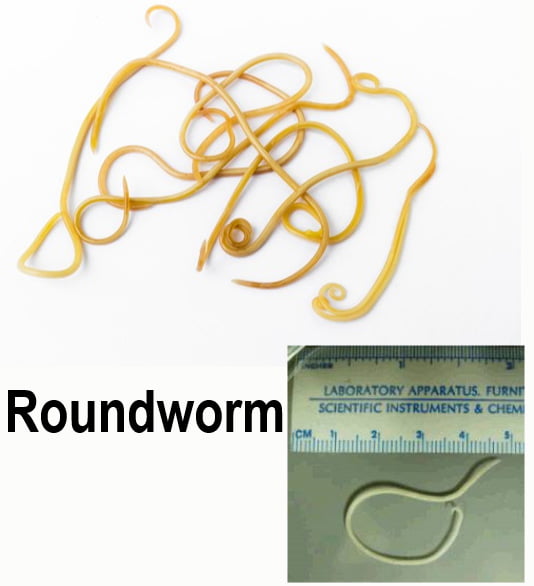Domestic and feral cats get roundworms by ingesting the eggs. They ingest eggs in various ways, perhaps by being in contact with soil which contains the eggs. The eggs are picked up by their paws which they then lick when they groom themselves. Another way that cats get roundworms is by eating a host such as a beetle or rodent which has acquired the encysted larvae in its tissue i.e. inside the body. Other hosts might be earthworms, cockroaches and birds. My research indicates that flies are not hosts to roundworm larvae. I wonder, however, if it is possible for a roundworm cyst to be on the outside of a fly, attached to a fly because the fly has been on the faeces of an animal that passed the larvae?

Once the encysted larvae are ingested by the cat they are released into the cat’s digestive tract. The eggs hatch from the cyst. “Encysted” means encased or enclosed in a cyst and the word “cyst” means, in this context, a tough protected capsule which encloses the lava of a parasitic worm.
Roundworms are called ascarids by scientists. They are the most common worm parasite in cats. The larvae of the roundworm Toxocara cati can can migrate inside the cat’s body. The larvae are carried to the lungs in the bloodstream. They are mobile inside the bloodstream and crawl up the trachea where they are swallowed. This may cause the cat cough and gag. They return to the intestines and develop into adults. This happens in kittens.
During lactation of a queen (the mother cat) dormant larvae of Toxocara cati (feline roundworm) are released and they re-enter the circulation and are transmitted to her kittens in her milk. This is the major way that kittens become infested with this parasite. The larvae are present in the mother’s mammary glands. Kittens can also acquire the disease in the same way that adults do.
Kitten and mother should be dewormed starting about three weeks of age because even if there are no larvae in her faeces it does not mean that she has not got roundworms.
A less common roundworm infestation in cats is the species Toxascaris leonina. This species does not pass in a mother’s milk into her kittens but is acquired in the same way as the other species namely by ingesting the eggs or by eating infected animals. Clearly, a cat who lives indoors and outdoors and likes to hunt is far more likely to acquire this parasite.
A heavy infestation in kittens can cause severe illness or death. They become thin and pot-bellied. They may cough or vomit, are anaemic and have diarrhoea. They may develop pneumonia when the worms migrate from the blood vessels to the air sacs in the lungs.
Roundworms look like white earthworms or strands of spaghetti but they are alive and moving.
